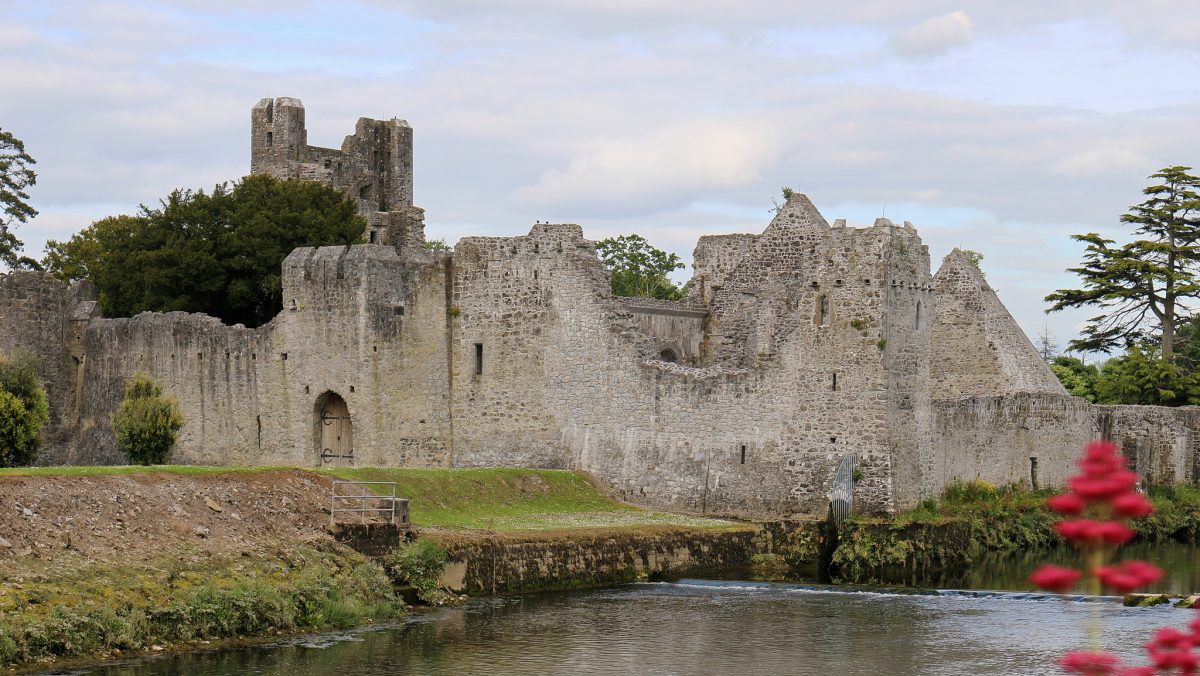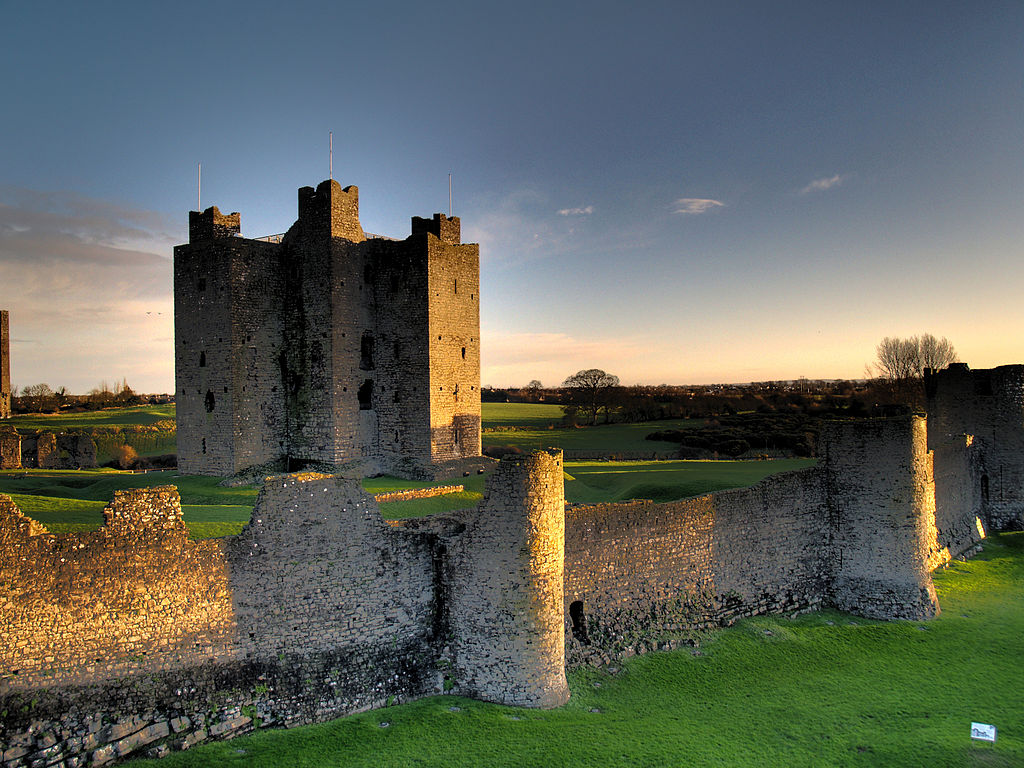Irish Castles: Guide to Ireland’s Castles
When they were first built, most castles were used as fortresses for defence purposes.
Yet following the medieval period, the majority of the castles started being used as private fortified residences. With some castles being traced back to the 11th century, it is not surprising that approximately a thousand Irish castles lie in ruins. Independently from their use or condition, visiting castles or their ruins can be equally charming and impressive.
If you find yourself in Ireland and want to discover some of the most beautiful castles, we have compiled a list with our must-see castles in Ireland. Choose which ones you want to visit wisely – or alternatively, visit them all!
Find a Castle in Ireland
Hover over a dot to find out more about a specific castle!
Desmond Castle
Kinsale, County Cork
Desmond Castle is a tower house located in the town of Kinsale in County Cork, Ireland. A fine example of an urban tower house, the castle consists of a three storey keep with storehouses to the rear. Originally built as a Customs house, the castle also served as a prison in the 18th century (it is known locally as ‘the French Prison’, due to the majority of the naval prisoners it kept being from France) and has had a long and varied history.
Today Desmond Castle hosts the International Museum of Wine Exhibition, an intriguing story that documents the unique history of Ireland’s wine links with Europe and the wider world.The castle was declared a National Monument in 1938. The castle is an affordable attraction to visit, with tickets starting from 13 euros for a family.
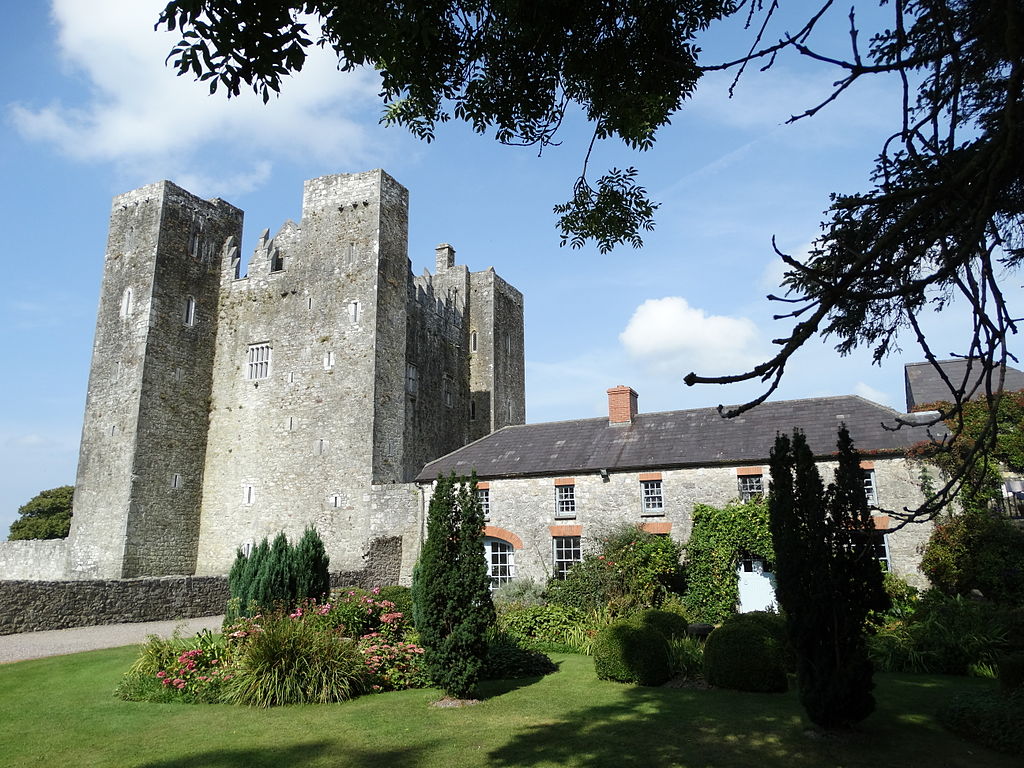
Barryscourt Castle
Carrigtwohill, County Cork
Barryscourt castle is the 16th century seat of the Barry family. The present castle, with its largely intact bawn wall and corner towers, is a fine example of an Irish tower house. It is located in Southern Ireland, and the land on which the castle currently sits is believed to have been occupied for over 1,000 years, with a wooden mill previously located on the land.
Both the First floor Main Hall and the Second Floor Great Hall have been extensively restored with fittings and furnishings reinstated. The Orchard has been restored to an original 16th century design and a herb garden has been reinstated in the bawn. The castle itself is still quite a popular tourist attraction, and free guided tours are available around the castle.
Waterford Castle
Little Island, Waterford
An impressive castle set on a private 310-acre island along the River Suir, this 16th-century castle based within a golf resort is only 5 km from the centre of Waterford, but feels completely in its own world. Waterford Castle‘s elegant rooms include claw-foot baths, and exceptional room service is available 24/7, making the whole experience feel even more luxurious.
There’s an oak-panelled restaurant at the castle, and a spacious lounge bar which serves afternoon tea, as well as an 18-hole golf course with a putting green, and a playground. Activities such as falconry, picnics and clay pigeon shooting are offered for a fee, however, if you simply want to relax then it is also a great place to do that. Even if you’re not staying at the castle, you can still head along for a visit and enjoy all of the facilities.

Rathfarnham Castle
Rathfarnham, South Dublin
Rathfarnham Castle is a 16th-century fortified house in Rathfarnham, South Dublin, Ireland. The original castle at Rathfarnham dates back to the Elizabethan period and was built for Archbishop Adam Loftus, an ambitious Yorkshire clergyman who later became Lord Chancellor of Ireland. This is one of the finest examples of what is described as a ‘fortified manor house’ in Ireland. It’s 4 flanker towers, instead of being square are angular (angle bastions). This site is steeped in history and had previously been the site of an Iron Age fort.
Rathfarnham Castle is open seven days a week from May to September, and from Wednesday to Sunday during winter. Tickets for tours of the Castle interior can be purchased at reception. Tours can be arranged around the castle, and there is also a great playground in the grounds managed by the local council.
Dublin Castle
Dublin
Founded in the 13th century as a defensive fortification by King John of England, Dublin Castle is now owned by the Irish Government. The city of Dublin actually gets its name from the Black Pool – ‘Dubh Linn’ which was on the site of the present Castle garden. The pool is no longer there, but much of the history associated with this castle is still visible. The Castle stands on the ridge on a strategic site at the junction of the River Liffey and its tributary the Poddle, and it is believed that the original fortification may have been an early Gaelic Ring Fort.
The castle today is a major tourist attraction and conferencing destination. The building is also used for State dinners (the most recent being for Queen Elizabeth II in 2011) and most significantly, the inauguration of the presidents of Ireland.

Malahide Castle
Malahide, North Dublin
With parts of the castle dating back to the 12th century, Malahide Castle is an impressively intact castle considering the age and wear it has seen over the years. It is one of the oldest castles in Ireland, and was home to the Talbot family for more than 800 years. The history of the family is traced within the castle in the form of preserved artefacts and paintings, many of which date from when the house was originally built. The family and the castle were both very influential within the country, and played a major role within Medieval Irish history.
The castle survived the Battle of the Boyne, with many stories of bravery on the part of the Talbot family emerging from this bloody battle. Looking at the castle today, you’d probably find it difficult to believe that it was once the location of bloody battles – this is especially true of the surrounding gardens, which are not only immaculately kept, but are also beautiful. The gardens cover an area of around 22 acres, and were mostly created by Lord Milo Talbot, who was a keen collector of plants, and wanted the gardens to have as diverse a collection of plants as possible. Many of the plants in the gardens, come from across the world. Equally impressive were the skills of Lord Talbot in landscaping – he rearranged the layout of the gardens for maximum dramatic impact, creating hills which overlook sections of the gardens for stunning aerial views.
Maynooth Castle
Maynooth, County Kildare
Maynooth Castle is a ruined 12th century castle in Maynooth, County Kildare, Ireland which stands at the entrance to the South Campus of Maynooth University. The castle was founded in the early 13th century and became the principal residence of the Kildare branch of the Geraldines. The original Keep, constructed right at the start of the 13th century, was one of the largest of its kind in Ireland. It is now home to a small exhibition about the history of the castle and the family who occupied it.
The castle now acts as an impressive entrance for anyone visiting the Maynooth College, despite the fact that the castle is now mostly ruinous. Restoration work began at the turn of the millennium, however, there is still a long way to go before the castle will return to its former glory. You can, however, take tours of the areas of the castle which are still accessible, and it’s a nice way to kill a few hours during your trip to Maynooth.

Trim Castle
Trim, County Meath
As the largest Norman castle in Ireland, Trim Castle has earned a reputation as one of the best places you can visit in the entire country. The castle has an area of 30 000 m², and was once used as a centre of Norman administration. Trim Castle is perhaps most famous for being the shooting location of Braveheart, which is testament to the condition of the castle and how it has held up since it was built in the 12th century. The castle has a picturesque location, on raised ground overlooking the River Boyne.
The castle took roughly 30 years to build, and has 20 sides. It was originally surrounded by a moat, ditch and curtain wall, making it a very intimidating building. It is cruciform in shape, and is very impressive if viewed from the air. Unfortunately, the access at the castle for disabled visitors is not great, as so much of the original castle remains. However, it is still worth visiting, even if you are unable to climb the stairs within the keep, as there are plenty of other areas to be explored.
Portumna Castle
Portumna, County Galway
Portumna Castle is a semi-fortified house in Portumna, County Galway, Ireland. It was built in the early 17th century by the 4th Earl of Clanricarde, Richard Burke. Portumna Castle is located close to the shore of Lough Derg near where the River Shannon enters the lake.When it was built, Portumna Castle was without equal in Ireland at the time in style, grandeur and distinction, outshining castles at Rathfarnham, Kanturk, Carrickfergus, Charlemont and Burncourt. Its builder was Richard Burke, 4th Earl of Clanricarde, Lord President of Connaught, of the de Burgo family of Norman descent. The castle was built around 1610 to 1617 at a cost of £10,000 (which was a huge amount of money at the time!).
Although the castle is beautiful to look at, it is also quite intimidating and imposing. This is partly due to the North facing facade of the house, which is approached by a long avenue. The ground floor of the castle is open to the public and has a small exhibition which gives some information about the history of the castle. This is a great place to visit if you enjoy outdoor activities, as you can get involved in golfing, go-karting and hiking in the surrounding area if you enjoy these types of things.

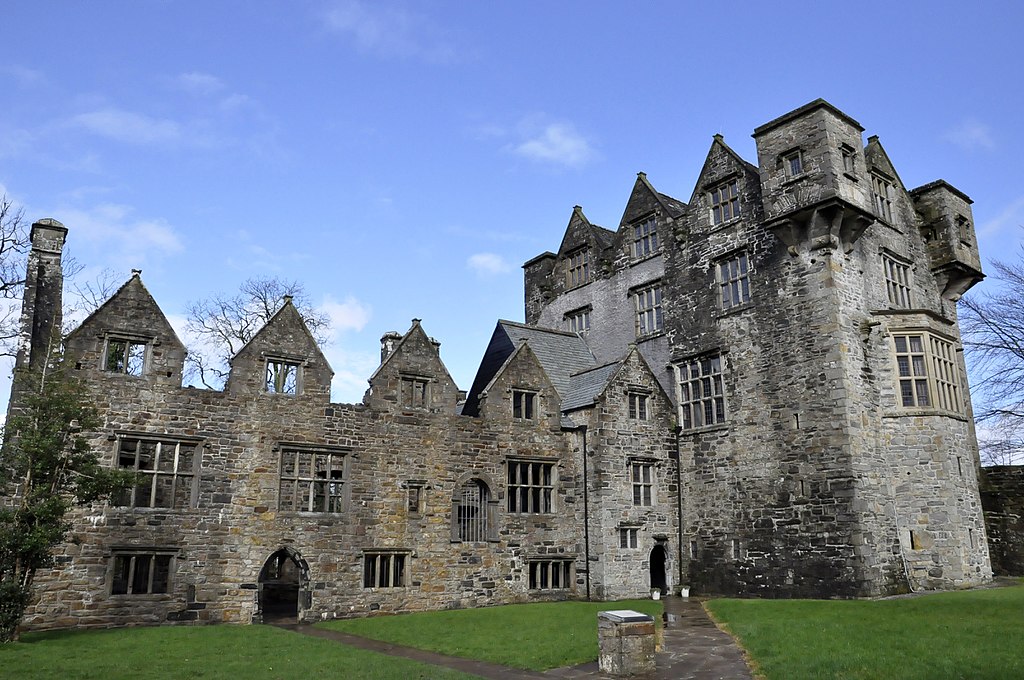
Donegal Castle
Donegal Town, Ulster
Donegal Castle is a castle situated in the centre of Donegal Town in County Donegal in Ulster, Ireland. For most of the last two centuries, the majority of the buildings lay in ruins but the castle was almost fully restored in the early 1990s.
The castle consists of a 15th-century rectangular keep with a later Jacobean style wing. The complex is sited on a bend in the River Eske, near the mouth of Donegal Bay, and is surrounded by a 17th-century boundary wall. There is a small gatehouse at its entrance mirroring the design of the keep. Most of the stonework was constructed from locally sourced limestone with some sandstone. The castle was the stronghold of the O’Donnell clan, Lords of Tír Conaill and one of the most powerful Gaelic families in Ireland from the 5th to the 16th centuries. (Wiki) There is no restaurant or cafe on site, so be prepared to bring a little picnic along with you!
King John’s Castle
King’s Island, Limerick
Built in the 13th century, King John’s Castle is in incredible condition considering the age, and is generally regarded as being one of the best maintained Norman castles in Europe. The remains of a Viking settlement were found on the site of the castle in 1900, making the preservation of the castle and the land surrounding it even more important. The castle is located next to River Shannon, on King’s Island in Limerick.
Unlike the castle itself, the visitor centre is very informative and modern. It includes modern touchscreen technology, and 3D models which recreate what the castle and the surrounding area would have once looked like. It’s a great place to take kids. There is also a cafe at the castle which is a varied menu.
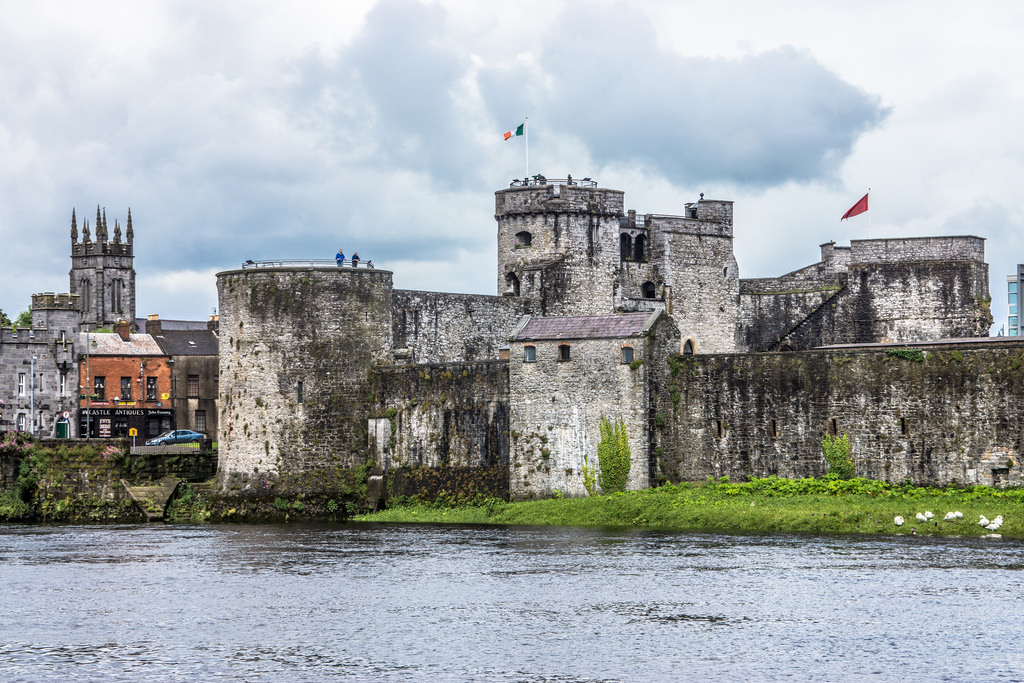

Glin Castle
Glin, County Limerick
Glin Castle is the ancestral home of the Knights of Glin and is still the family home of the Fitzgeralds to this day. The original Glin Castle, besieged in 1601, lies nearby in the village of Glin. The present castle was built in the 18th century. It has impressive interiors with an exquisite Neo-Classical interiors, a delicate Adam–style ceiling, grand entrance hall with Corinthian columns, a large dining room and three comfortable reception rooms for relaxing and entertaining in.
The gardens are exceptional – with pleasure grounds at the back of the house – formal lawns, a picturesque stream, meadow, winding gravel walks and ancient oak trees. The walled Kitchen Garden is charming, and adjoining it is the original stone and cobbled Stable Yard.
Ashford Castle
The magnificent five star Ashford Castle is set in 350 acres, on the picturesque shores of Lough Corrib. Dating back to 1228, the castle overlooks Lough Corrib lake on 350 acres of parkland, and is only a 9-minute walk from the Gothic Cong Abbey. Opulent rooms come with antique rosewood furniture and high-end linen – some even have 4-poster beds. All have free Wi-Fi, minibars and flat-screens. Suites add separate dining rooms and sitting areas.
There’s a restaurant, a bistro, a small bar and a medieval-style pub. Afternoon tea is served in a Victorian-era room. In addition to an indoor pool, amenities include a full-service spa, a cinema and 9-hole golf course, plus a falconry school.
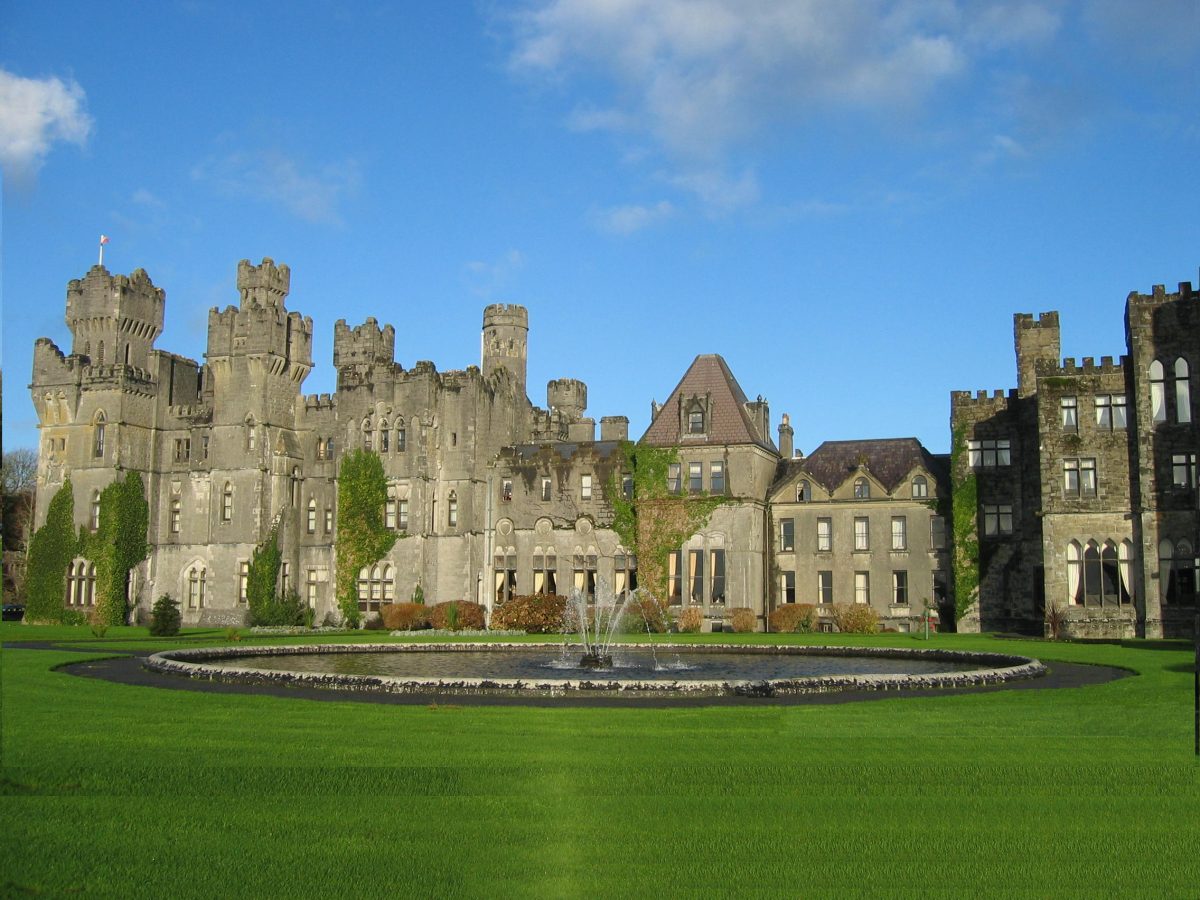
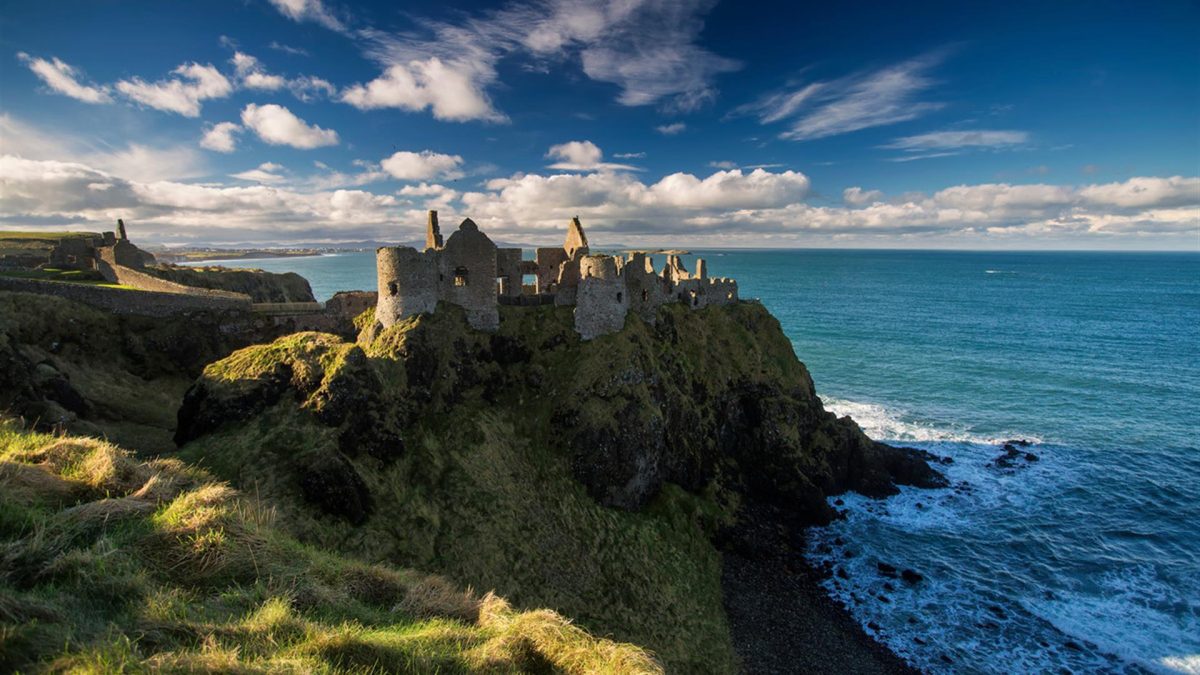
Dunluce Castle
County Antrim, Northern Ireland
Dunluce Castle was built by Richard Og de Burgh, 2nd Earl of Ulster in the 13th Century. Prior to it ruin this picturesque castle was inhabited by both the fueding McQuillan and MacDonnell clans.
Today, you are still able to visit this Castle with historical and archeological exhibits available for public viewing.
Kilkenny Castle
Kilkenny, Ireland
Built-in 1195, Kilkenny Castle was occupied by the powerful Butler Family, where it acted as the principal seat of the Butlers of Ormonde for almost 600 years. The Castle, played a key role in defending the town, due to its location at the fording point of the River Nore where it was able to control the junction of several routeways.
The Castle sits within extensive parkland and in the Victorian era underwent a remodeling. Then in 1969 the Castle was officially taken over by the Irish State and remains open to visitors.
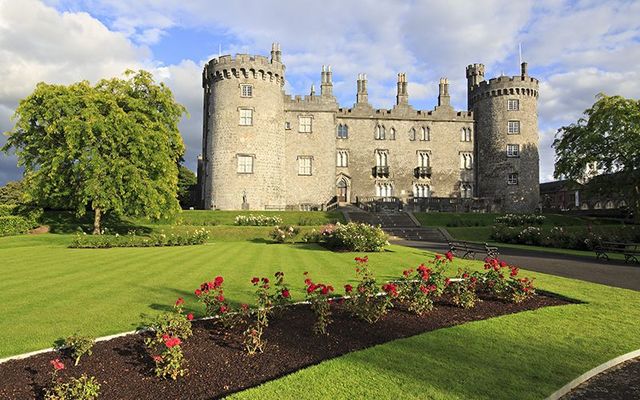

Bunratty Castle
County Clare, Ireland
Set in the heat of Bunratty Village, Bunratty Castle is a large tower-house-style castle that was built in 1424 by the MacNamara family. The Castle that remains today is actually the fourth castle to have been built on this land as the prior three fell victim to attacks.
The first record of a Bunratty structure dates back to the Norsemen era when it was noted that there may have been a settlement/trading camp, although this was destroyed by Brian Boru in 977. Following this records suggest Robert De Muscegros constructed a motte and bailey castle around 1250. Then Thomas De Clare was first to build a stone structure on this land in 1276, only for the castle to be attacked and destroyed in 1284. De Clare rebuilt the castle shortly after with the addition of a 140-yard (130 m) long fosse built around it, which helped it stay intact until 1318 when once again the castle would fall to the ground.
Brought to you by Celtic Titles
The Everlasting Gift of Irish land. Become a Lord or Lady of Ardmore here.

